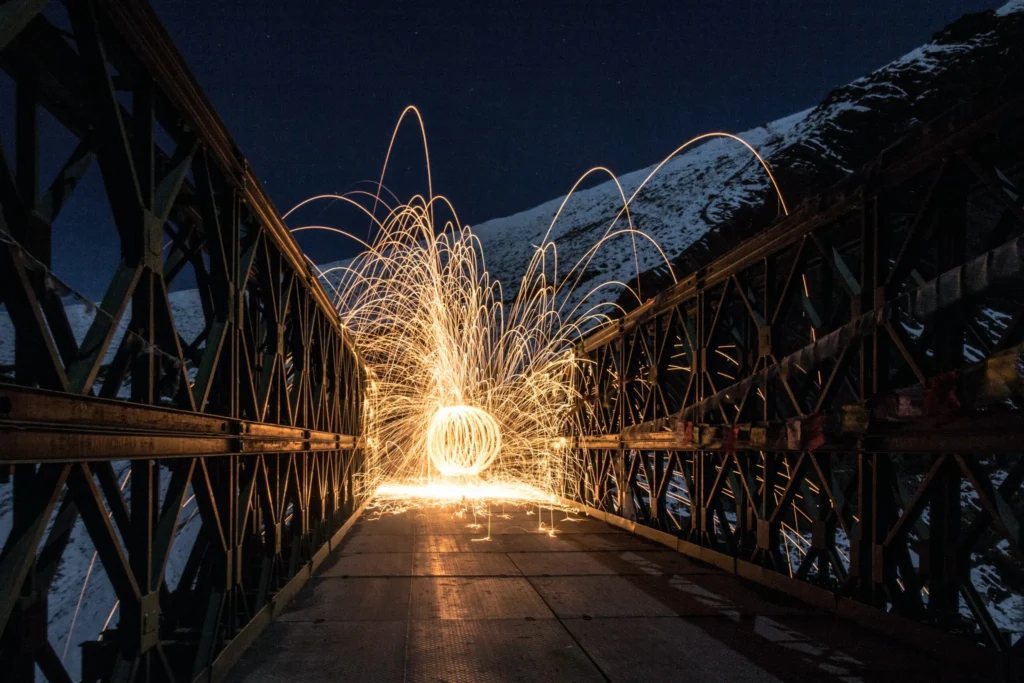Capturing Time: The Art of Long Exposure Photography
Imagine a world where rushing waterfalls transform into silky whispers, car trails paint vibrant streaks across the night sky, and clouds morph into ethereal wisps chasing the moon. This isn’t a scene from a dream, but the magic of long-exposure photography, a technique that lets you paint with time itself.
Long-exposure photography goes beyond the typical snapshot, revealing the hidden movement and drama woven into everyday scenes. It’s about showcasing the “how” as much as the “what” – how a waterfall cascades, how traffic flows endlessly, or how the stars waltz across the celestial canvas.

Long-exposure photography is more than just a technique; it’s an art form that allows photographers to freeze moments in time while capturing the essence of motion. From dreamy light trails to smooth waterfalls, long-exposure photography unlocks a world of creativity and expression. In this article, we’ll delve into the magic of long-exposure photography, exploring techniques, tips, and inspiration to help you master this captivating style.
This captivating technique unlocks a treasure trove of creative possibilities. Let’s delve into a few:
-
Transforming Water into Silk: Have you ever been mesmerized by the smooth flow of a waterfall? Long exposures can turn that cascading water into a dreamlike texture, blurring the movement into a soft, ethereal veil. Imagine capturing the power and serenity of a rushing river transformed into a gentle, flowing silk ribbon.
-
Painting with Light: Cityscapes at night become a playground for long exposures. Imagine bustling streets where cars streak by, leaving behind vibrant trails of light, like shooting stars trapped on the asphalt. You can paint bustling avenues with trails of red taillights and white headlights, creating a sense of movement and energy in a place that usually sleeps.
-
Capturing the Dance of the Stars: Ever wondered what the Earth looks like as it spins? Long exposures can reveal the mesmerizing trails of stars as they rotate across the night sky. Set up your camera facing the Milky Way on a clear night, and with a long exposure, capture the Earth’s rotation as these celestial bodies leave behind their dazzling trails.
-
Cloud Drama Unfolds: We all appreciate a beautiful sunset, but long exposures can elevate it to a whole new level. Imagine capturing the fiery hues of the setting sun bleeding into the soft pastel canvas of the twilight sky, while wispy clouds are transformed into streaks of drama, adding a touch of storytelling to your landscape.
These are just a taste of what long-exposure photography offers. But capturing these captivating images requires more than just a fancy camera. It’s a dance between light, composition, and most importantly, patience.
Gear Up for Time Travel:
While you don’t necessarily need the most high-end equipment, a few key elements will significantly enhance your long exposure experience:
-
A Sturdy Tripod: Camera stability is paramount during long exposures. Even the slightest shake can result in blurry images. Invest in a sturdy tripod that can hold your camera steady for extended periods.
-
Neutral Density (ND) Filters: These magical filters act like sunglasses for your camera lens, reducing the amount of light entering the sensor. This allows you to use slower shutter speeds even in bright daylight conditions, essential for those dreamy waterfall effects or light trails.
-
Remote Shutter Release: Even the gentlest press on the shutter button can cause the camera to shake. Using a remote shutter release minimizes this risk, ensuring your images remain crisp and clear.
Beyond the Gear:
The true magic of long-exposure photography lies in mastering the interplay of light, composition, and exposure time. Here are a few photographer’s secrets to get you started:
-
Scout for Location: Not every scene is created equal for long exposures. Look for places with interesting movements, like flowing water, moving cars, or drifting clouds. Consider foreground elements that can add depth and context to your image.
-
Compose Your Masterpiece: Just like any photograph, the composition is key. Think about leading lines, the rule of thirds, and using negative space to create a visually balanced image.
-
Experiment with Exposure: There’s no one-size-fits-all approach to exposure time. It depends on the desired effect, available light, and camera settings. Start with a longer shutter speed and adjust based on your results.
-
Embrace the Unexpected: Long-exposure photography is a dance with chance. While you can plan the scene and composition, factors like wind or passing cars can introduce unexpected elements. Sometimes, these happy accidents can elevate your image to new heights.
Long-exposure photography is a rewarding technique that allows you to see the world in a whole new light – literally and figuratively. It’s about capturing the essence of time, the movement, and the drama that unfolds around us every moment. So, grab your camera, embrace the creative possibilities, and embark on your own adventure in capturing time.


